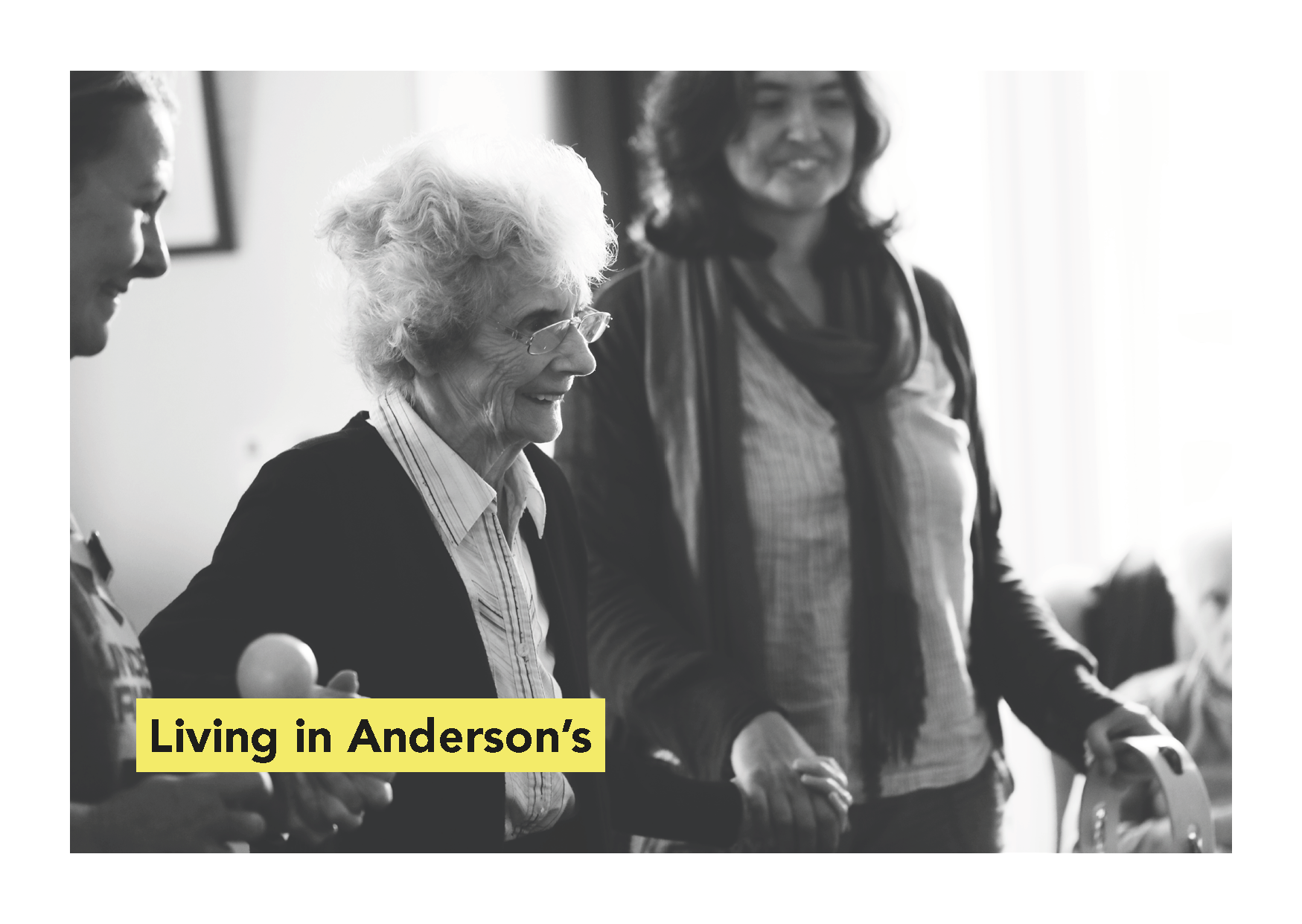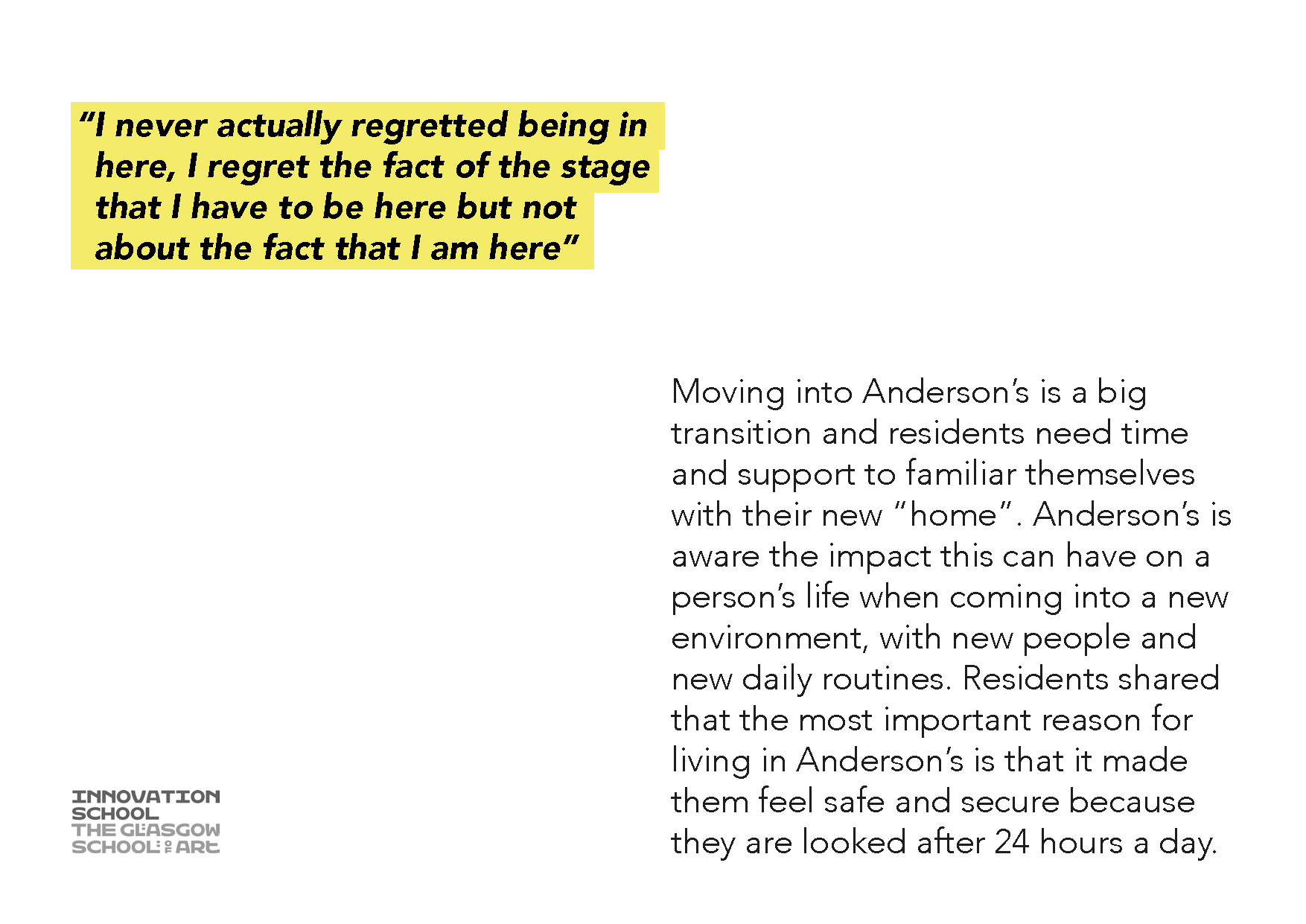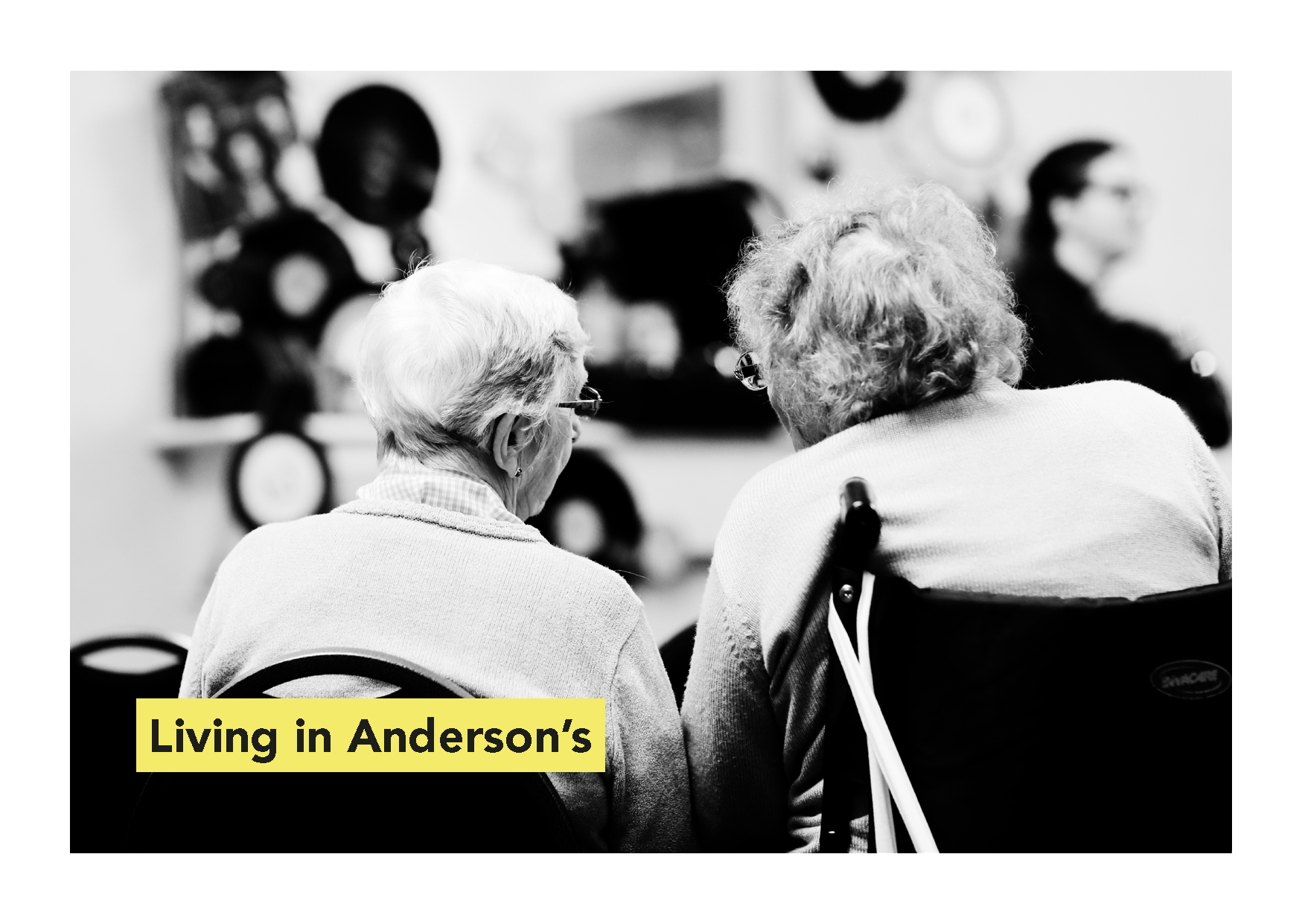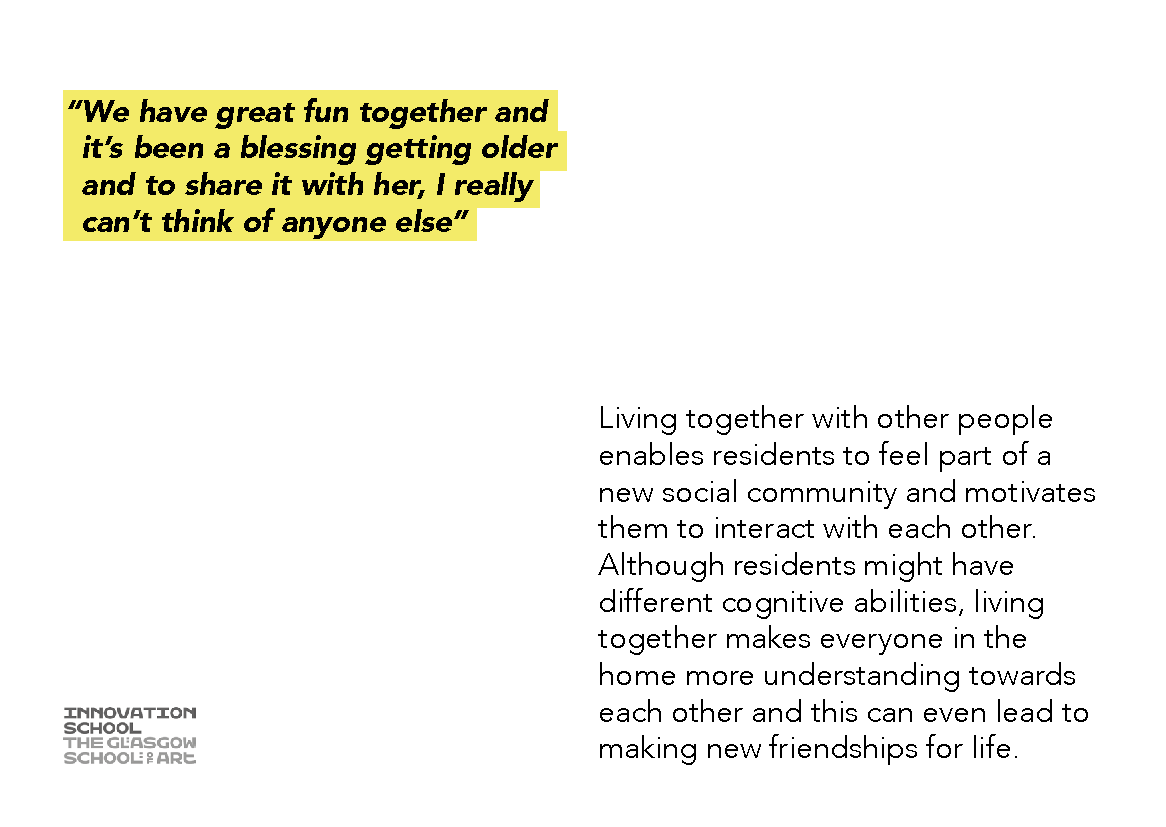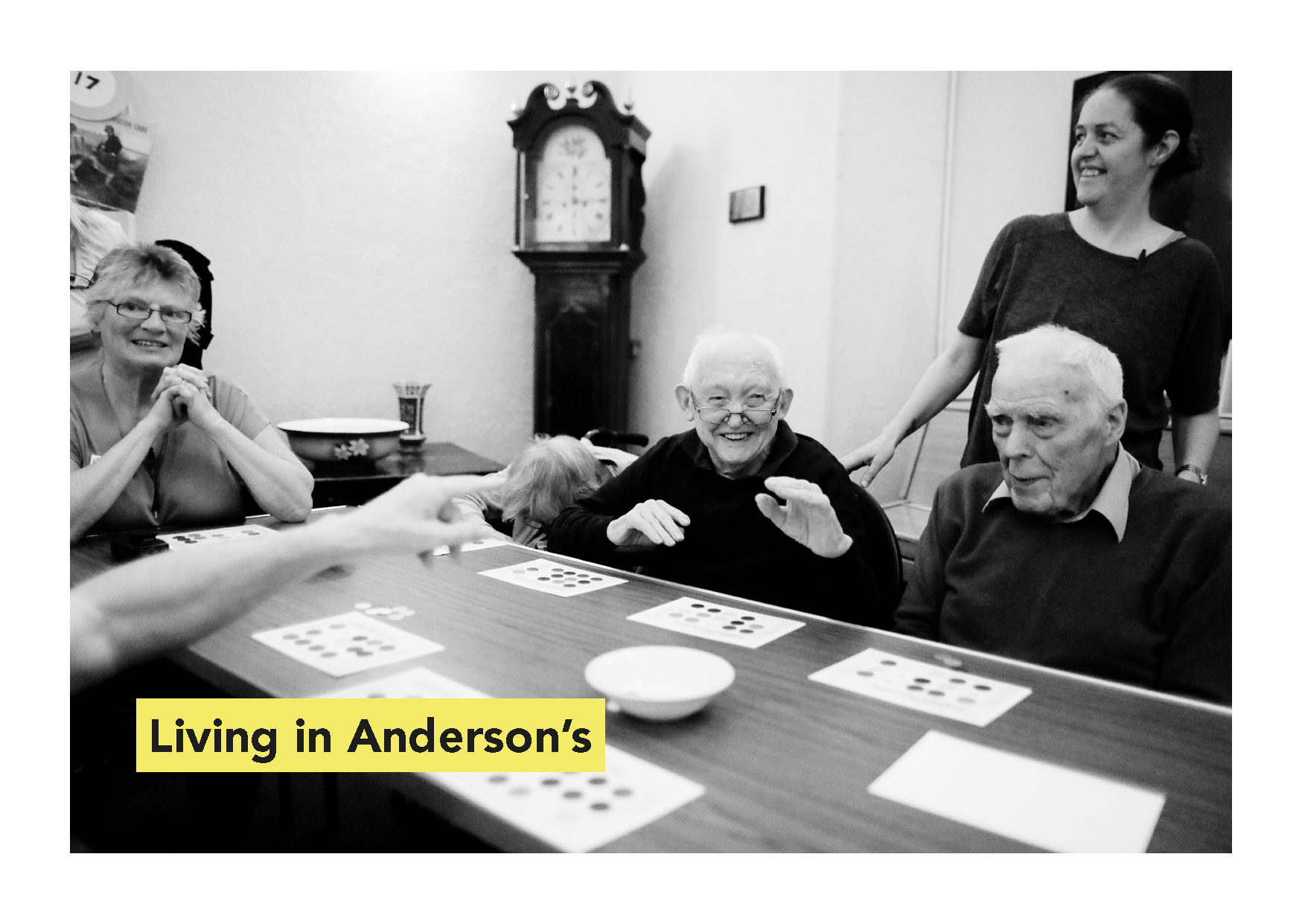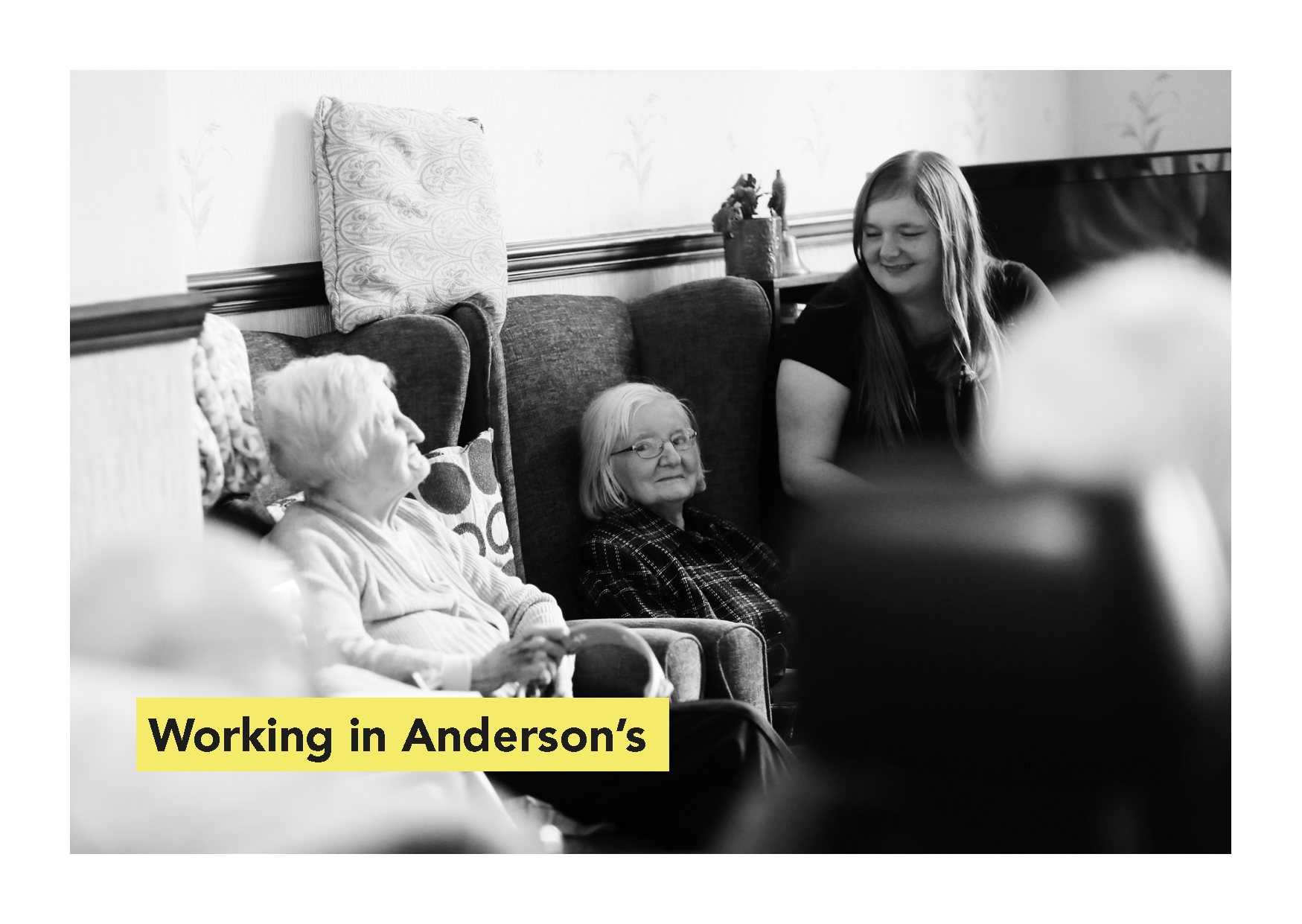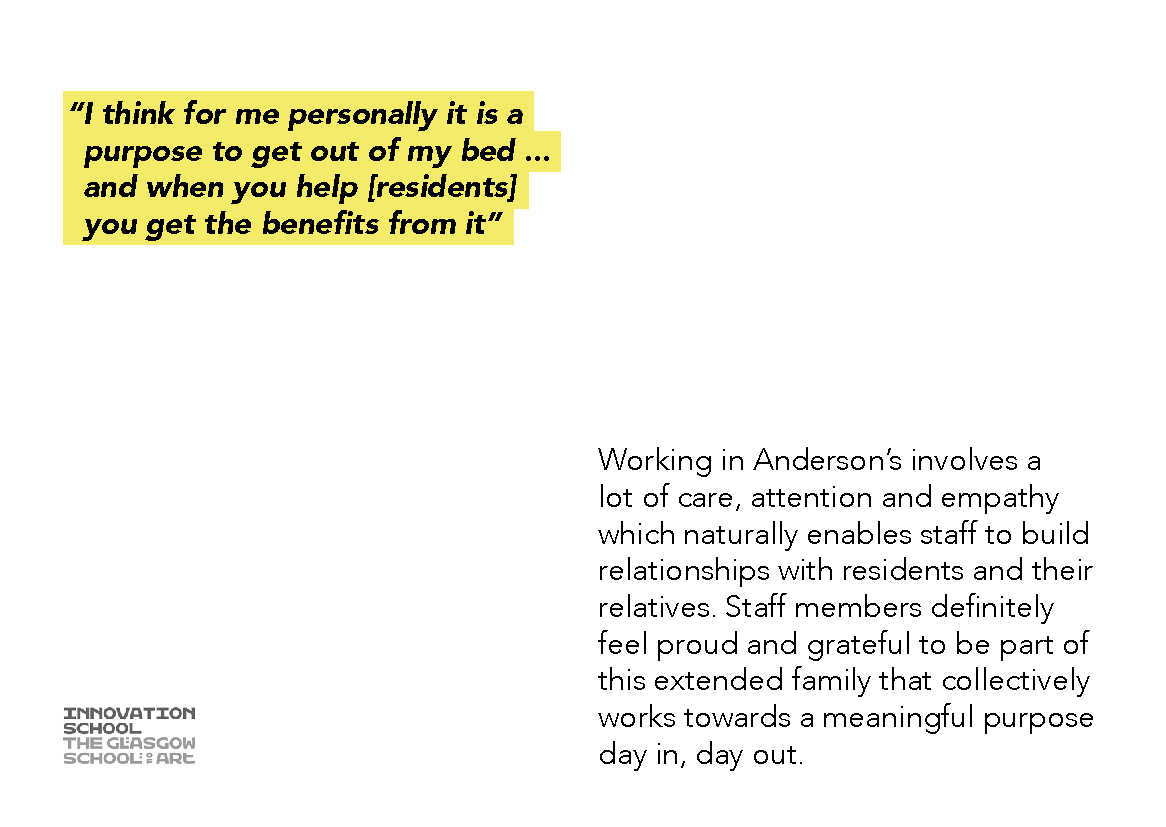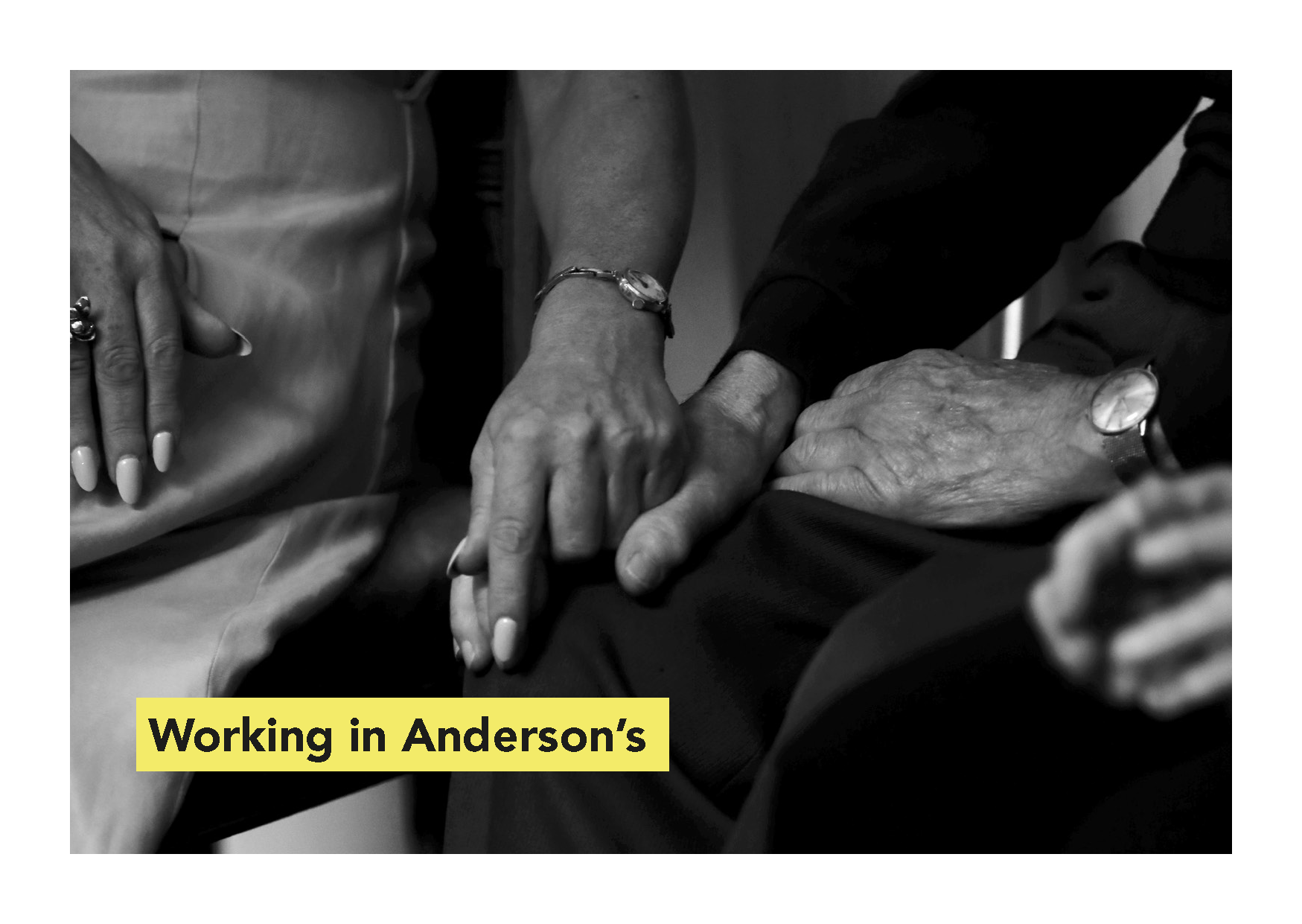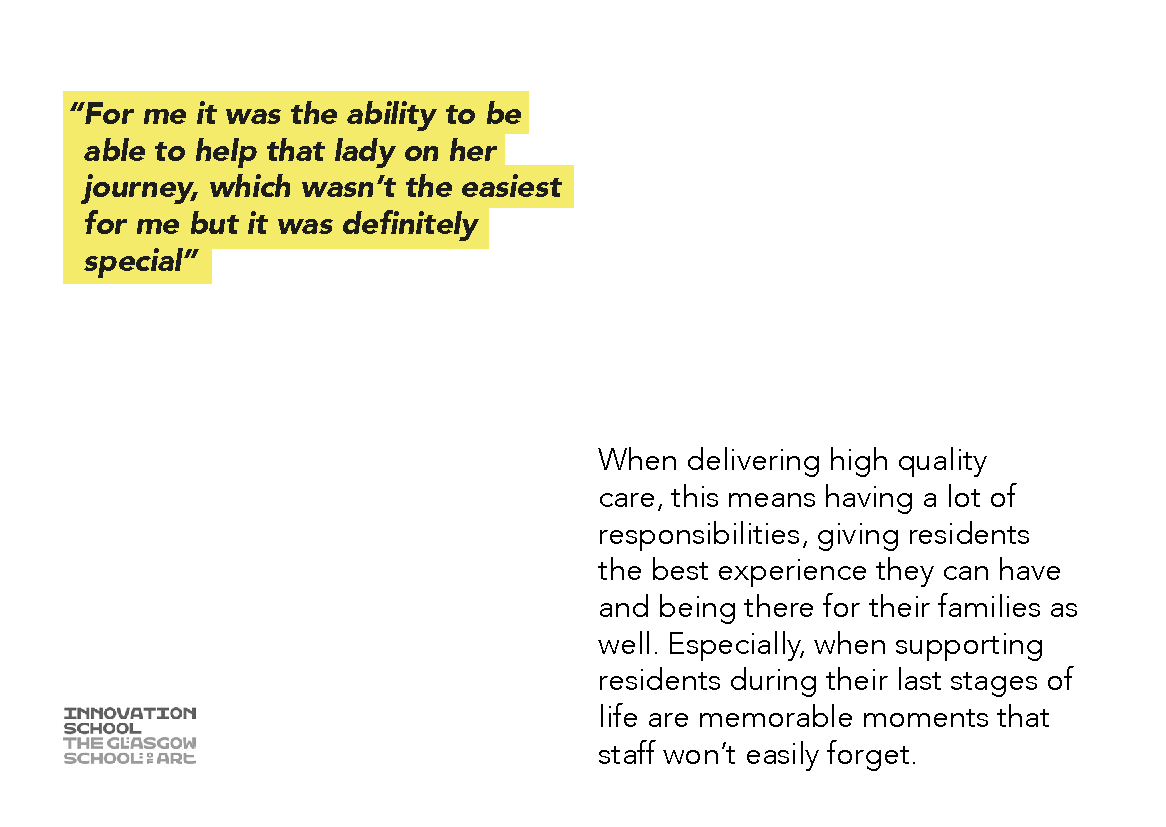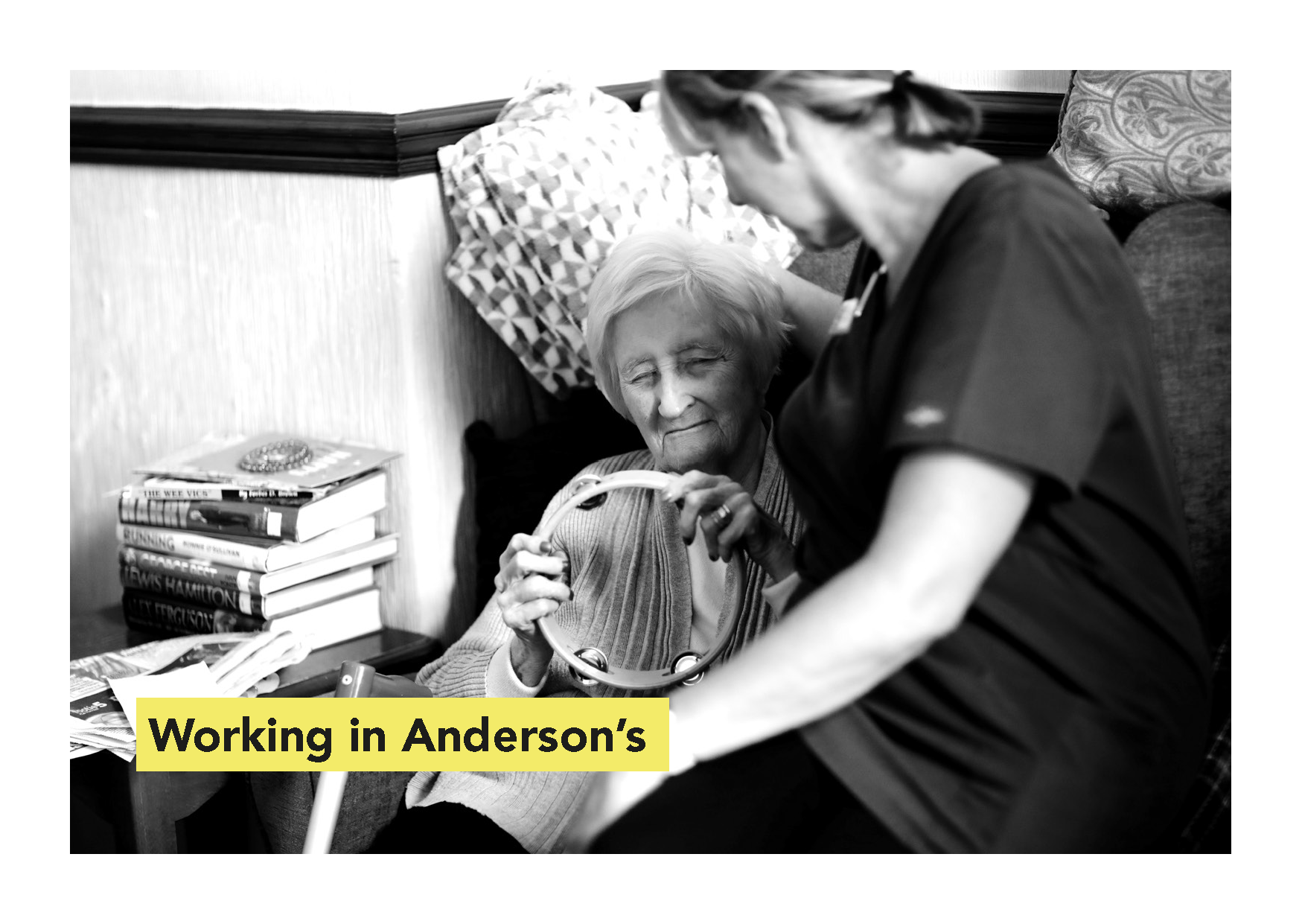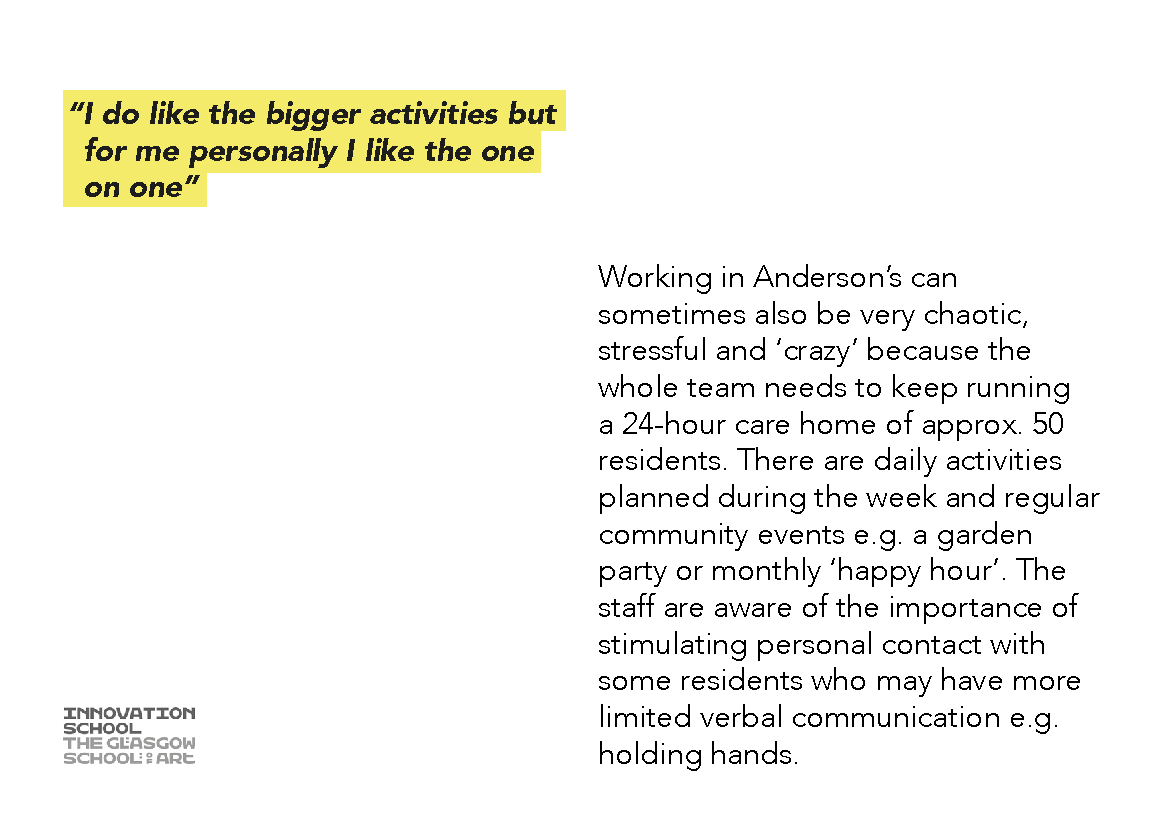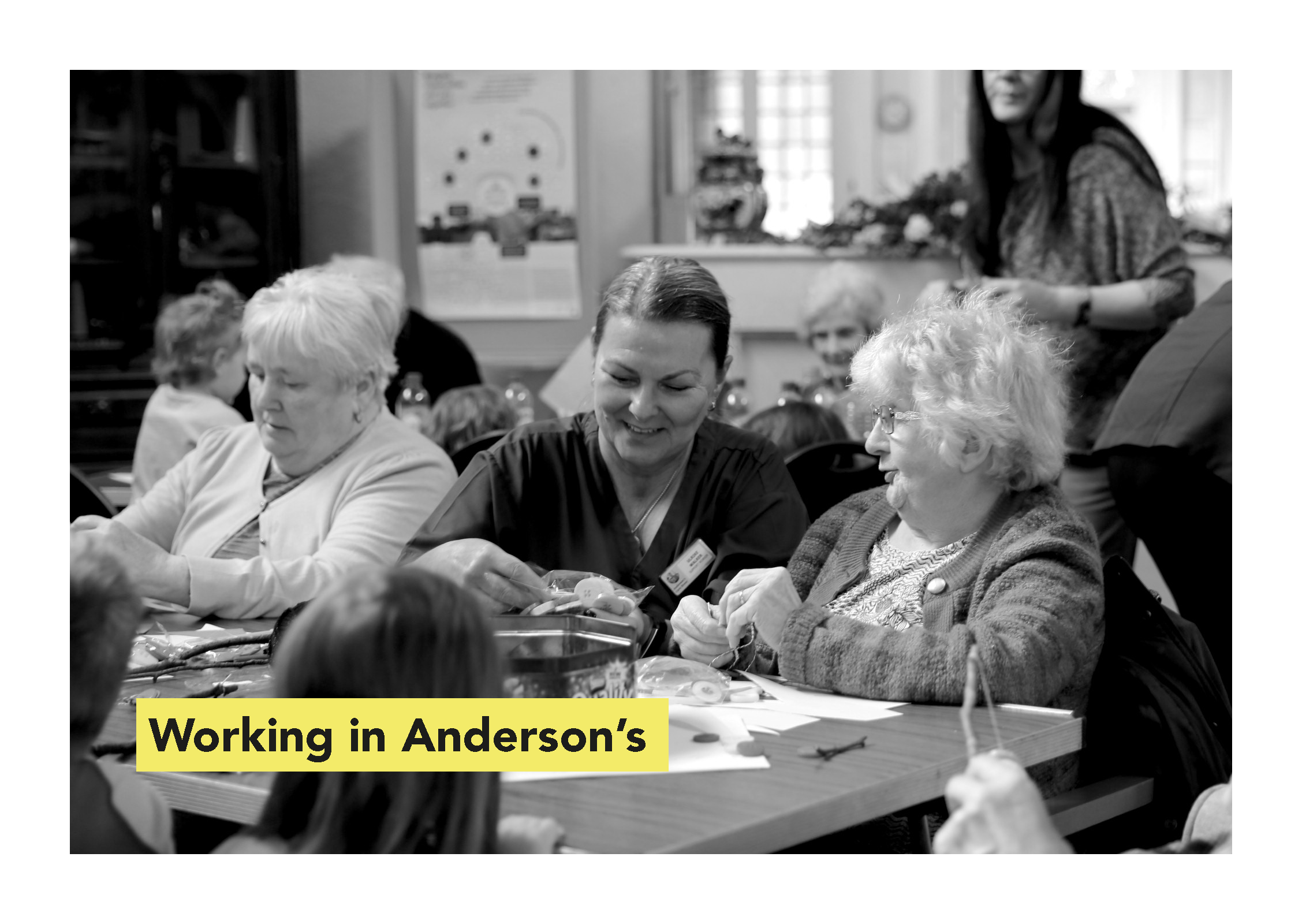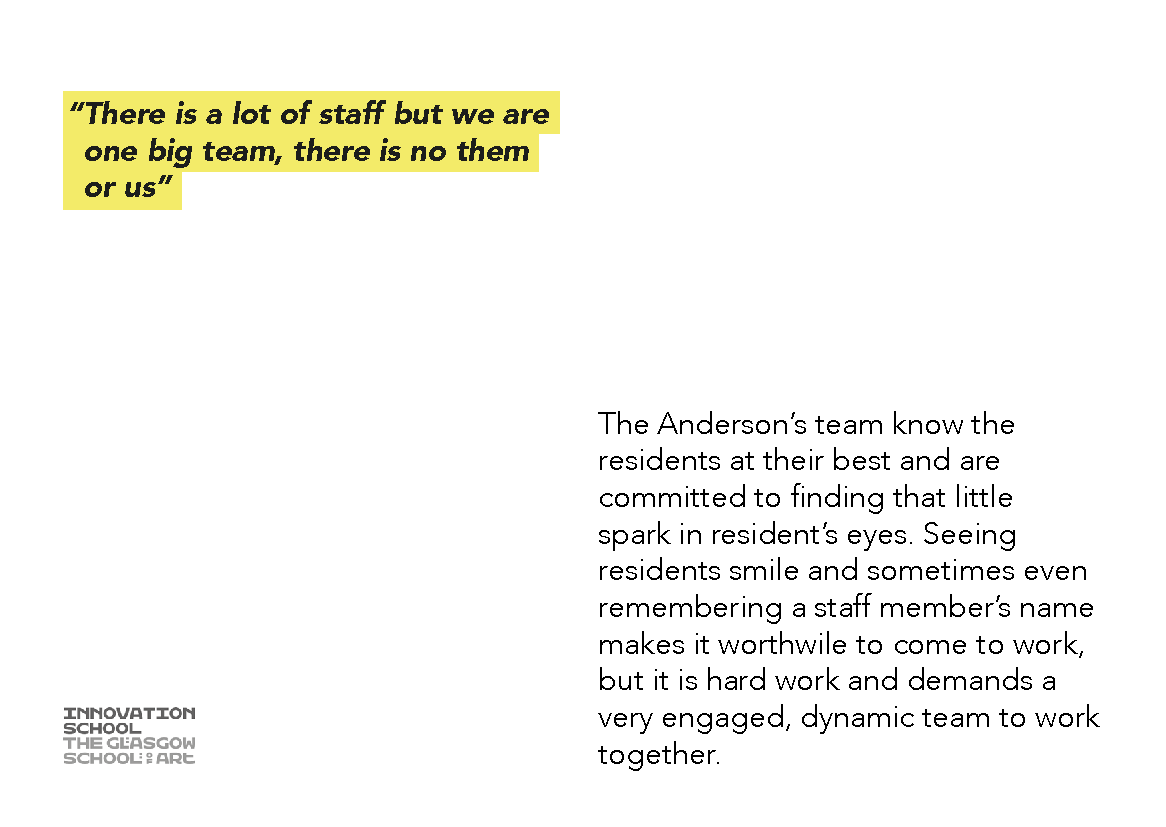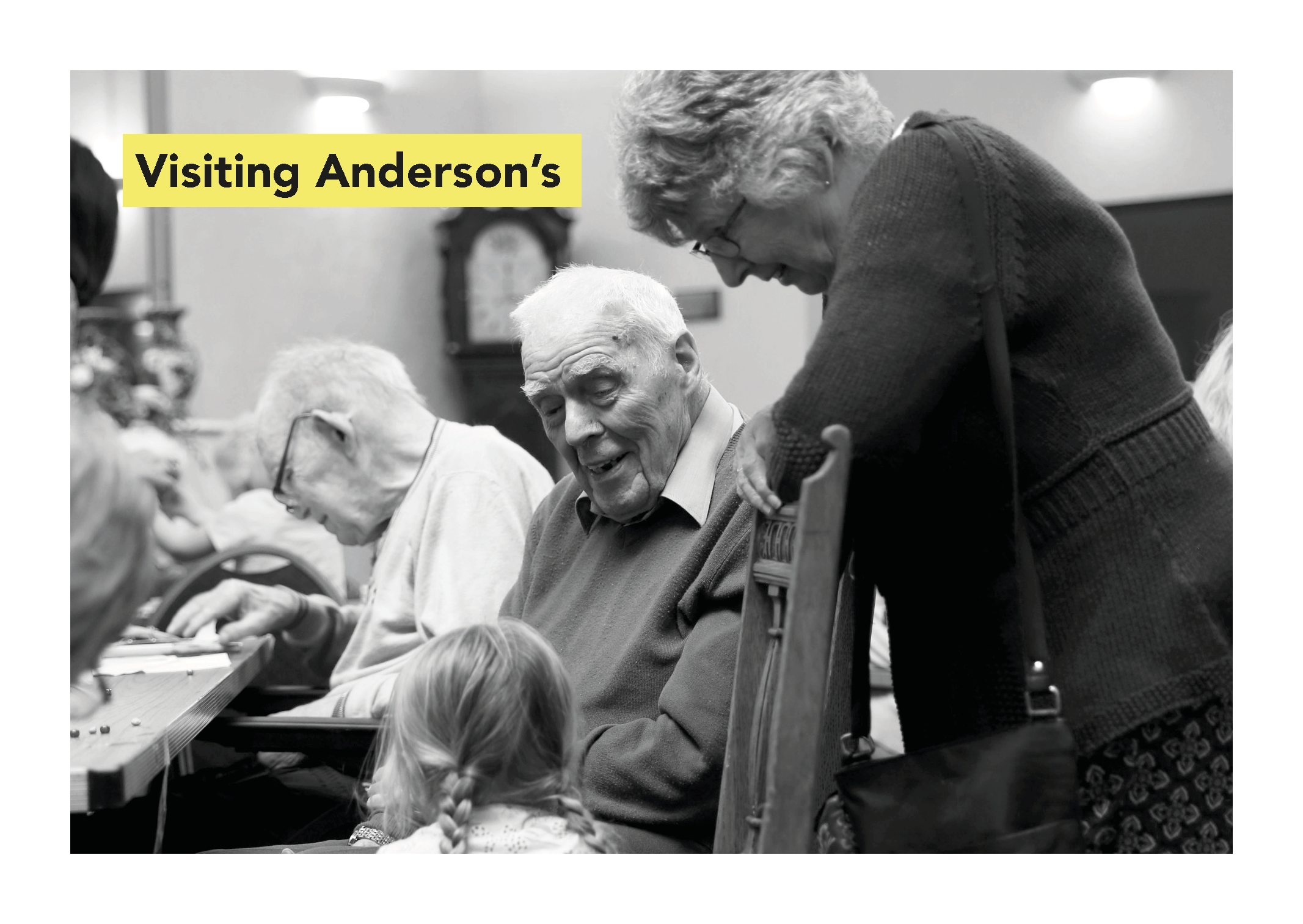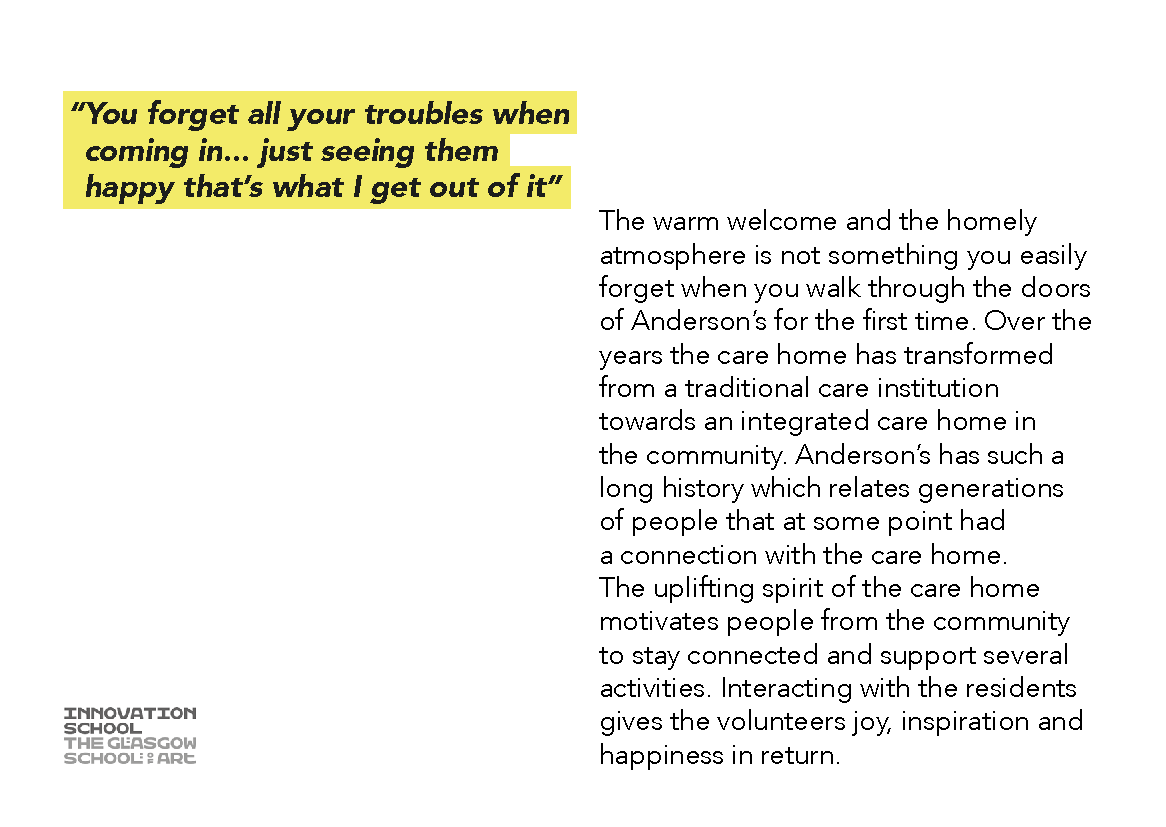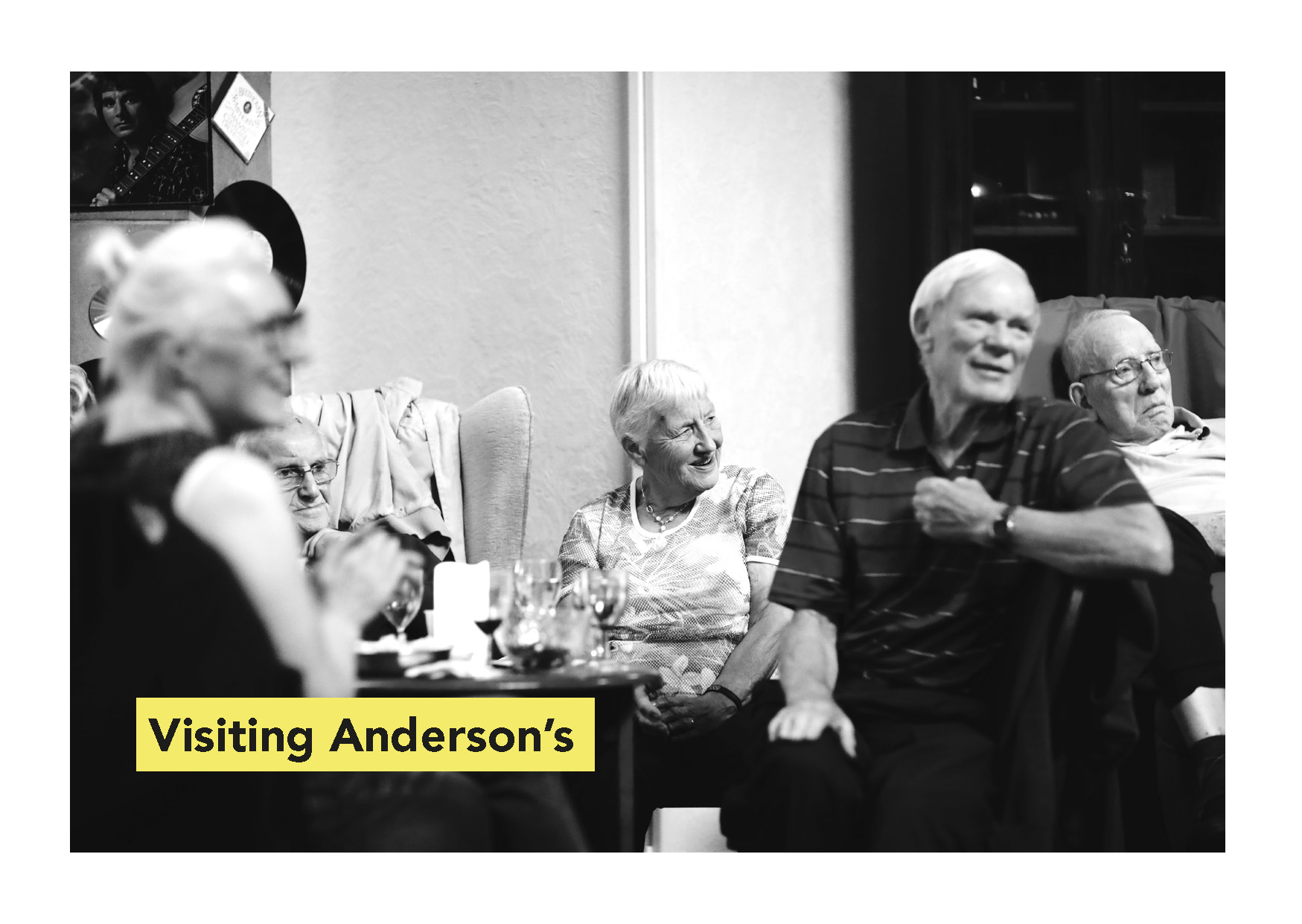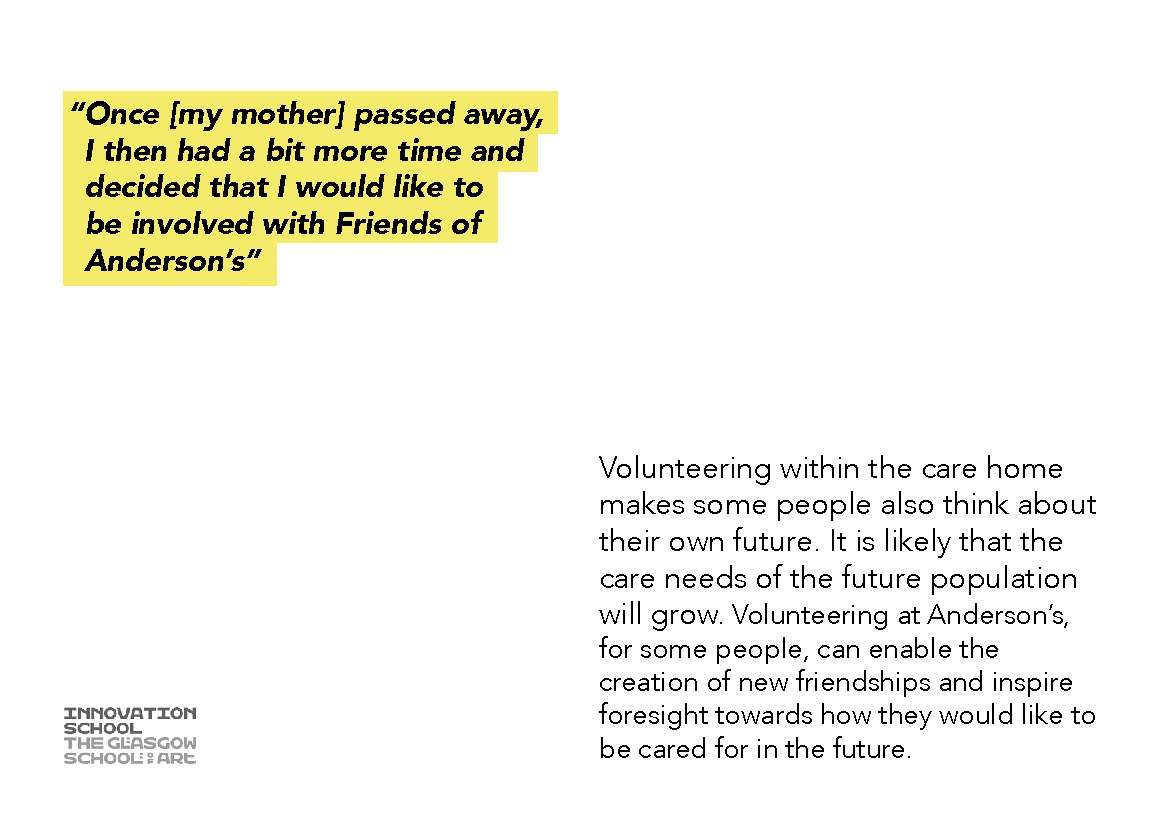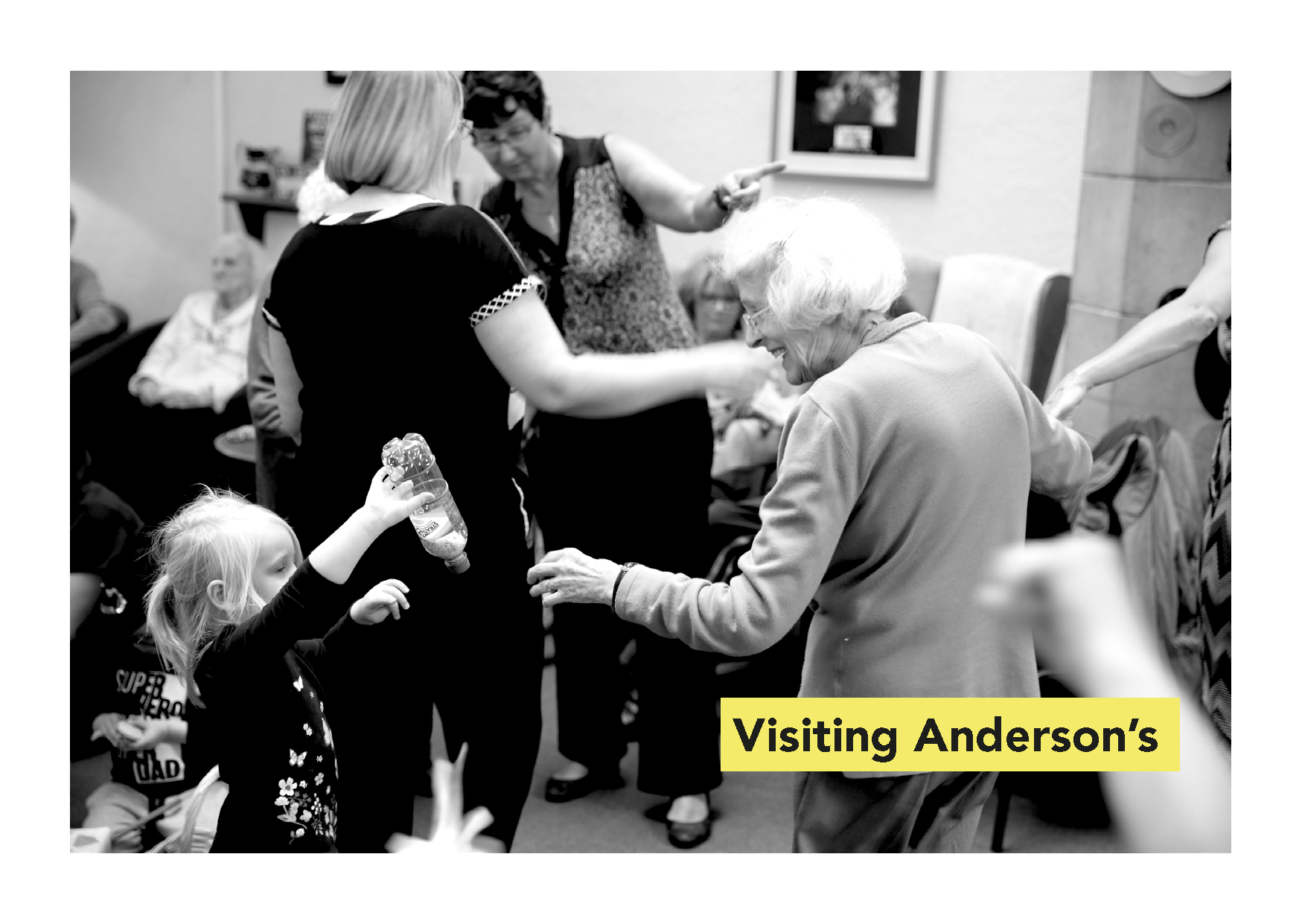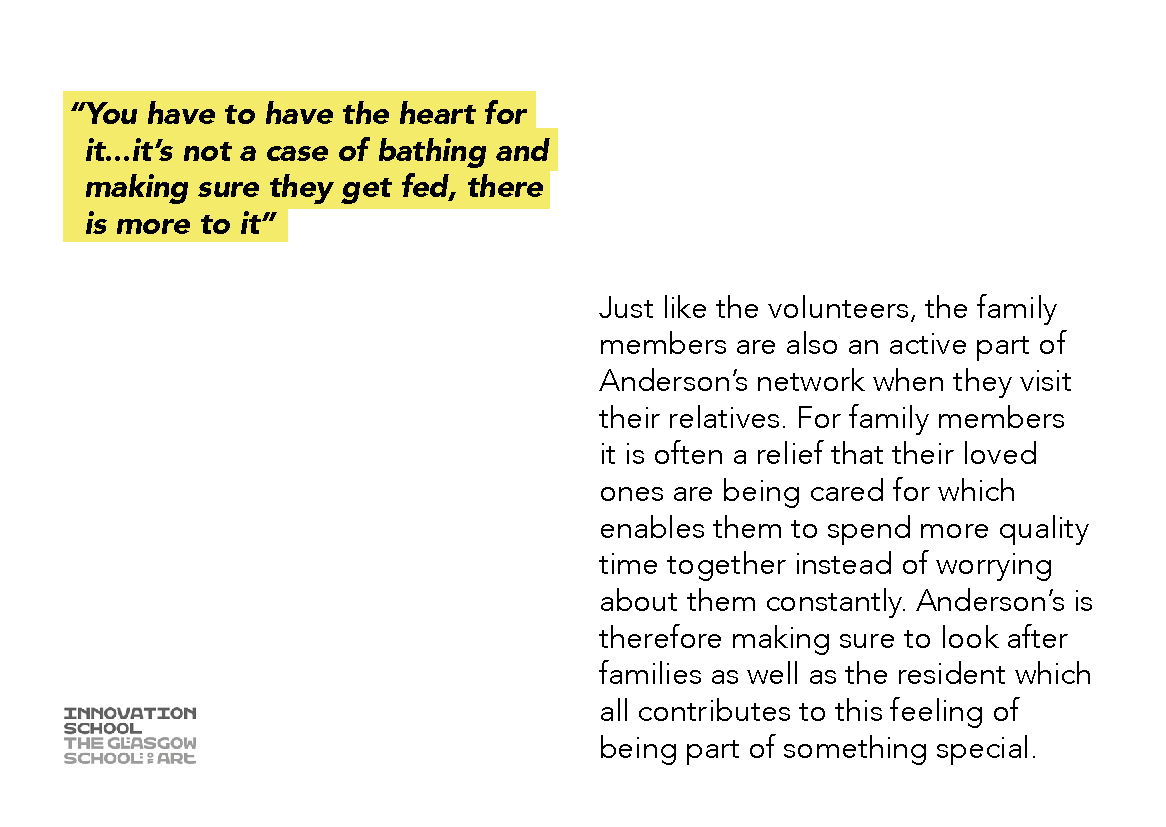bringing communities and care together
MAking human rights real through music
Background
Figure 1: Entrance Anderson’s Care Home, which originates from 1832
The Innovation School are collaborating with Anderson’s to innovate perceptions of ‘care home’ by exploring community connections and social wellbeing, and identifying ways in which human rights can be practically applied for people affected by dementia. The project is funded through the ‘Rights Made Real in Care Homes’, Life Changes Trust programme and aims to involve the wider community to diversify Anderson’s and develop a roadmap that demonstrates opportunities for integration with the community as a way to support public understanding of care homes and promote positive attitudes.
The legacy of Anderson’s (see Figure 1) has community at the heart tracing back to the origins of the care home as a gift to the community for the ‘education of young and care of old age’. This project aims to develop this legacy and support the rights of residents by actively involving them in shifting perceptions of ‘care home’ to a community-based organisation that extends beyond traditional boundaries and overcomes existing perceptions and stereotypes. By extending reach to the wider community, the project can also support positive public attitudes and understanding about dementia.
The project aims to understand perceptions and develop a ‘redefinition’ of ‘care home’ through co-design with residents, staff, families, volunteers and wider members of the community. The development of person-centred interventions will explore the role of music and other media to support people affected by dementia to tell their story, support their personhood and identity, identify needs and aspirations, and explore opportunities to widen social interaction that extends to the wider community.
aim
This project aims to employ a rights-based approach to redefine Anderson’s and wider perceptions of ‘care home’ through co-design with residents, staff, families and the wider community. The project will overcome existing perceptions and stereotypes by developing opportunities for community-based interventions that evidence the practical application of the rights of residents.
The project will:
Develop an understanding of current perceptions of ‘care home’ and dementia of the local community and develop these insights in to concepts and ideas that support the redefinition of Anderson’s ‘care home’ and promote positive attitudes among the general public.
Support the development or improvement of services at Anderson’s through co-design with residents and staff that actively support a rights-based approach and demonstrate practical application.
Identify opportunities for community engagement and provide a roadmap to how such opportunities could be implemented by Anderson’s.
Identify opportunities for people affected by dementia to develop their personal identity, quality of life and wellbeing through music-based interventions.
Support the development of music-based interventions that increase opportunities for social interaction among residents, carers and the wider community, enhancing wellbeing in the broadest sense.
methods and process
Figure 2: Overview of the planned co-design process
The Innovation School specialises in co-design and visual methods that support creative explorations in innovation together with professionals and the people who are most impacted by the co-design experience. Within this project it means that residents, staff and members of the community are seen as ‘experts of their experiences’ (Sleeswijk Visser, et al. 2005). The researchers supported this creative process by developing designed tools and techniques that enabled participants to express themselves and share their experiences.
The design-led approach to the project is aligned to, and underpinned by, the principles of the Health and Social Care Standards to ensure those who participate feel respected, are met with compassion, are involved in the process and supported to participate, and finally, that their wellbeing is protected and promoted in an ethical manner.
Figure 2 on the right provides an overview of the co-design process which aimed to first collect people’s wider perspectives of care homes, understanding stories and experiences related to living, working or visiting Anderson’s and finally to collectively explore the role of music within a care home setting with the wider community.
A visual of the emergent and iterative design process (Figure 3) explains how each fieldwork intervention informed the development of the process. This involved a range of research methods including: embedding in context through observation to build an understanding of everyday life in Anderson’s; pop-up public engagement to understand wider perceptions of care homes; visual interviews to collect stories of care home living, working and visiting; co-design workshops to support residents, staff and volunteers to explore and develop ideas for music-based activities; finally prototyping and testing the music-based ideas through a programme, ‘Anderson’s Community Medley’.
Figure 3: Design research process
Insights
1. Wider perspectives about care homes
When you are asked to describe a ‘care home’ a number of images and thoughts may become present in your mind. You might think of people eating together, chatting together and maybe watching a bit of television. The media are often unhelpful in portraying images and stories of care homes that often conjure up negative perceptions that mask the reality of care home life. This impacts wider public perceptions of care home living and can lead to stigmatising attitudes. However, people who have already experienced a care home either by visiting family or working there have a more nuanced and realistic idea about care home life and the role of care homes within the community. For most of the population, it is also hard to imagine themselves ever living in a care home. As one of the residents explained: “I never thought about care homes or being cared for, I always thought I was going to look after myself independently”. Preferably, people would like to see care homes as moving from one home to another home. Anderson’s care home in Elgin, which originates from 1832, strives to make this a reality.
2. Stories of Anderson’s - what does it mean to live, work and visit Anderson’s?
People see Anderson’s as a special place, with happy but also sad memories. Either way it makes people feel part of an extended family. Through interviews with residents, staff and volunteers we wanted to understand the stories behind this iconic building.
It is a combination of different threads that are all connected to the Anderson’s vision which is about giving residents the reassurance of being looked after within a dynamic and social environment, the attentive, hard working and caring staff that feel responsible about people’s well-being, not looking only to the resident but including families as well; the good hearted volunteers who contribute to resident’s joyful experiences during all the activities; and the bravery of a care home that is constantly on the look out for new ways of engaging with the community and open for change.
The transparency of running this care home makes the Anderson’s experience unique and different. It is not about one specific thing but it is a feeling that you will experience when you will look further than those ‘big black doors’.
3. Exploring the role of music in a care home context
Within this project we strongly relate to music because it support residents to develop their personal identity, relationships and friendships and as a way to have choice and control. We introduced music to the residents and staff through different levels of engagements; one to one sessions, small group sessions in the units or larger community sessions. Together with the Activity Coordinator we organised a three day ‘Community Medley’ in Anderson’s to test out new ideas for music activities with residents, staff and the wider community e.g. a custom made musical bingo, Anderson’s Community Choir and performances from local and international musicians. We also organised “The Anderson’s Experience” exhibition to communicate the project journey, the stories of Anderson’s and the music tools to the wider public (Figure 4 and 5). In addition, a personalised Anderson’s vinyl was created to illustrate the special songs of resident’s and their meaning. As one of the outcomes of the project we embodied the learnings and knowledge of all music-based activities in The REMIX toolkit (Rights-based, Engaging Music Interventions and Xperiences) which can be viewed and downloaded in the ‘Tools’ section below.
Figure 4: Collage of the three day “Community Medley” (Aug. 2019)
Figure 5: Exhibition of “The Anderson’s Experience” (Sept. 2019)
TOOLS
As a result of the learnings gained throughout the project we designed different tools (Figure 7) that other care homes can adopt and use in order to enhance music activities within a care home setting.
Figure 6: Activity coordinator showing the REMIX toolkit
The REMIX toolkit (A5 printed, double sided in colour) - see Figure 6 for a printed version
The Music and Me guide (A3 printed, double sided in black and white)
The Music album (A3 printed, single sided in colour)
The Anderson’s Musical Bingo (A4 reference of songs that can be used)
The tools were shared during an Insight Session at the Scottish Care National Care Home Conference and Exhibition in Glasgow (November 2019). Sharing it with the wider public and collecting insights from other care home practitioners will support the practical implementation of the tools.
Figure 7: An overview of the designed tools for music activities
Evaluation
Figure 8: Impression of evaluation session at Anderson’s
The evaluation process was led by a Research Fellow from The Glasgow School of Art specialised in design-led evaluation and used an innovative framework designed to include the qualitative, relational and emergent impact created through the co-design approach taken (Figure 8). The three key focus points of the evaluation framework looked at the differences in outcomes, process and the contextual learnings of the project. The methods used as part of the evaluation process can be divided in three parts: (I) a survey that was part of the project’s final exhibition event which engaged residents, staff, volunteers and the wider community, (II) a half-day workshop with 4 staff members and 4 community members to discuss the learnings of how the project changed current or new community connections and (III) two interviews were conducted with the design researcher and the Activities Coordinator at Anderson’s.
From the evaluation data gathered, the project successfully developed and employed a rights-based approach through the considerations and emphasising on the choices of participants throughout the project. This also resulted staff members and some partner organisations to reflect deeply on how their services and activities support meaningful relationships and engagement for residents, staff and the wider community. The experiences of staff identifying intimate changes in behaviour, emotions and facial expressions were seen as enhancing both the resident’s wellbeing during music activities, and the ability of staff to better care for them. It is from this core value created through resident’s enlivened responses to music, and the ability of all stakeholders to take part in music-based activities, that the project shined at supporting the development of music-based interventions that increase opportunities for social interaction among residents, carers and the wider community, enhancing wellbeing in the broadest sense.
“If you’ve got that involvement with your staff as passionate as yourself, it does make such a difference to the residents, where a team of people working together make things easier and run smoothly as well, and if everyone has that feel of involvement it helps the whole situation, to each thing you’re actually doing.”
– Staff member, Anderson’s
The challenge going forward is to translate this success for Anderson’s into a programme of supporting the development of the care sector more widely, which the project has produced rich and engaging materials to support just that. The perceptions of care homes were traced as dependent on whether people had experience of what care homes do or can do well. Therefore, this programme offers both a case of excellent practice in how to develop and deliver activities around a rights-based approach with music, as well as how a care home can develop relationships with the wider community through such activities.
In addition to the self-initiated evaluation of the project, Life changes Trust organised a two day evaluation and celebration get together for all seven funded projects to share the journeys and learnings across care home
acknowledgements
We would like to thank all the residents, staff, families and volunteers at Anderson’s for being involved in the project and for taking the time to share with us your stories, special musical moments and ideas. We are very grateful to everyone who gave their time and support so generously, with endless enthusiasm to make the ‘Community Medley’ such a huge success. Finally, we would like to thank the Life Changes Trust for supporting this project and for connecting us to the other ‘Rights made real’ projects across the programme.
for more information:
Dr. Tara French | t.french@gsa.ac.uk
Yoni Lefevre | y.lefevre@gsa.ac.uk
We would appreciate any reflections and feedback of the project, particularly feedback on the tools. Please leave your details below



